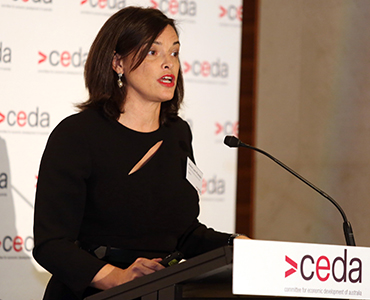More investment in infrastructure spending will be needed to meet a growing gap both in Australia and globally, according to Global Infrastructure Hub Chief Executive Officer, Marie Lam-Frendo.
 Speaking at a CEDA event in Sydney, Ms Lam-Frendo said that “based on the current trends, global infrastructure investment is likely to be US$79 trillion by 2040.”
Speaking at a CEDA event in Sydney, Ms Lam-Frendo said that “based on the current trends, global infrastructure investment is likely to be US$79 trillion by 2040.”
“However we’ve forecast an investment need of US$94 trillion by 2040 if countries are to increase their infrastructure performance.
“This leaves a gap of US$15 trillion.
“This gap represents public and private investment for expansion and replacement to greenfield and brownfield for infrastructure assets.
“Asia Pacific has the greatest investment need.
“China’s investment gap is dominated by the electricity sector which accounts for 75 per cent of this total US$1.925 trillion gap… airports, telecoms and water make up the remainder of this gap.
“For Australia the investment gap is forecast to be US$158 billion, the largest gap forecast in rail, followed by ports at 35 per cent.
“It is increasingly important for the private sector to have a role, we’ve seen a long term decline in public investment as a share of GDP across a number of major economies, I think the fall of Japan is quite impressive.
“At the same time the amount of private capital available is large and growing year by year and we should be looking for ways to use this to fill in the infrastructure gap much better.”
Ms Lam-Frendo said that the Global Infrastructure Hub presented a global survey to 130 institutional investors representing US$10 trillion worth of assets, with interesting results.
She said that Australia was the second most attractive market for infrastructure investment among advanced economies, behind the USA, followed by the UK, Germany and France.
“Of this US$94 trillion of global infrastructure need we have, US$53 trillion is actually in emerging markets,” she said.
“However there is a slow down, of those already investing in emerging market infrastructure, 63 per cent want to increase their investment compared to 94 per cent in 2017.”
QIC Deputy Head of Global Infrastructure, Matina Papathanasiou echoed these sentiments, further outlining the opportunities for investors in Australia.
“We’ve had a low interest rate environment for over a decade, which started in late 2008 and the QIC’s view is that we remain in uncertain markets,” she said.
“Investors are looking for predictable cash flows, long term inflation linked revenues and strong diversification within their portfolios as it provides uncorrelated returns, so when we’re investing capital we’ve got to think about this environment, how we actually achieve those investment objectives.
“Urbanisation and strong population growth in major cities around the world and especially in Australian cities such as Sydney and Melbourne will require significant new infrastructure.
“The average road performance around Australia is deteriorating, average speed and reliability is declining due to worsening congestion and this has a particularly acute impact on regions with high expected growth affecting the quality of life.
“Western Sydney is forecast to have one million new residents by 2031.
“People will have to travel more for work or longer, so that will mean increasing congestion will be an ongoing challenge and an impediment to growth in the future and existing infrastructure basically will be placed under increasing levels of stress.
“Whilst the pipeline in Sydney and Australia is more broadly focused in transport, there’s also significant investment required in other areas such as healthcare and telecommunications.
“Governments are investing significant amounts in these areas but part of the solution has to be in leveraging the private sector expertise and delivering, owning, operating and transforming the infrastructure we have to meet and deal with the emerging demands and customer preferences.
“Many governments are capital constrained and the involvement of the private sector has the potential to provide more than capital, particularly the expertise that exists in the infrastructure investment world now with people owning and developing and operating these assets for very long periods of time as owners.
“We argue that the ultimate metric for success is the quality of life within our cities.
“This not only improves the quality of life but it also ensures the investment returns of our assets are sustainable over the long term as they will continue to meet the needs of the customer.”
Event presentations
Marie Lam-Frendo, Global Infrastructure Hub
MP3 |
PDF
Matina Papathanasiou, QIC
MP3 |
PDF
Moderated discussion
MP3
Delegate handout
PDF